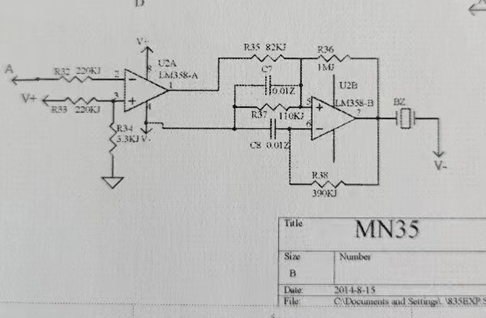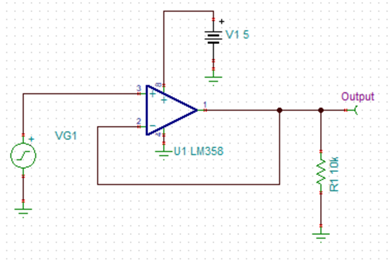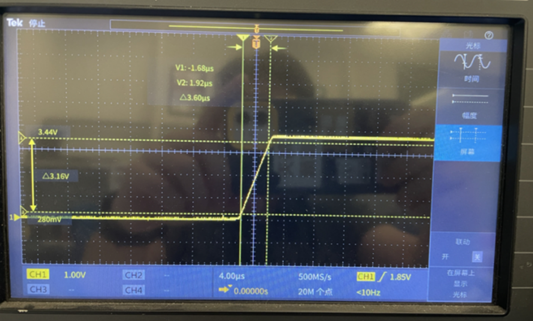- Ask a related questionWhat is a related question?A related question is a question created from another question. When the related question is created, it will be automatically linked to the original question.
This thread has been locked.
If you have a related question, please click the "Ask a related question" button in the top right corner. The newly created question will be automatically linked to this question.
Hi Team,
This is Uni-Trend account FAE Kevin, nice e-meet with you. My customer is Chinese Top company in Multimeter and oscilloscope market. The customer has recently experienced some problems with the product functionality during the production of the multimeter, the following is a description of the problem. (2000 pcs samples are involved and the customer has the idea of returning them).
【Background】 The customer's multimeter products use the LM358P to produce square wave de-driving beeper. Below is the application circuit diagram for the customer's LM358P(The buzzer sounds when the 1-pin output is high). The customer reported that the beeper was not loud enough, and the loudness was normal after the LM358P was replaced, and that the same lot of sockets was at fault. The customer thought it was a problem with socket.
【[Problem phenomenon]】The sound of the beeper of a normal machine is significantly greater than the sound of an abnormal machine

【Problem Positioning】


Waveform of normal machine Waveform of abnormal machine
【Question Point】
【Guess】


Abnormal machine
I have reviewed the specification for the SR parameter, there is only a typical value of 0.3V/us, and there is no mention of the maximum and minimum values, so do we have a range here? It seems that there is a difference between 0.8V/us and 0.3V/us. Is it in the range?
Problem Summary:
Hey Kevin,
Nice to e-meet you as well. It is not recommended to build a circuit with the slew rate as the limiting factor if you need a tight specification. There can be significant variance in slew rate across temperature and process.
It is recommended to set your oscillation frequency with an RC constant. Below are a couple oscillating circuits, and the frequency is set by the passive components, and not limited by the slew rate of the op amps.
https://www.ti.com/tool/CIRCUIT060042: Sine Wave Generator
https://www.ti.com/tool/CIRCUIT060010: Triangle Wave Generator
Best,
Jerry
Hi Jerry,
There may be some impact on the process, but is there some range for our SR parameters?Or is the SR parameter of 0.8V/us within the range of our device?
The customer's application is already in mass production, so maybe we should discuss this circuit.Hey Kevin,
There is not a limit to the range of slew rate, otherwise it would be tested and listed in the datasheet. What is the quiescent current of the device?
Best,
Jerry
Hi Kevin,
the buzzer itself can have an impact on the slew rate. Has the customer changed the buzzer model? Is it a piezo? A piezo shows a big capacitance which can have an impact on the OPAmp's slew rate. Eventually the insertion of an isolation resistor at the output of OPAmp could help. But without knowing your buzzer this is only a wild guess, of course...
Kai
Hi Kai,
The customer no change the buzzer, it just replace the LM358 and the function is recover.
Hi Jerry,
Thanks. The quiescent current we use the multimeter test and the AC current is 2.1mA, the DC current is 65uA.
Hey Kevin,
The device is 500uA/ch typically, the DC current should not be 65uA. What pins are you measuring quiescent current on?
Additionally, you may tell the customer that this is in the range of expected values for slew rate. I'm asking about quiescent current to confirm that this is just a higher bandwidth part that is at the upper range of the test limits, but still within specification.
Best,
Jerry